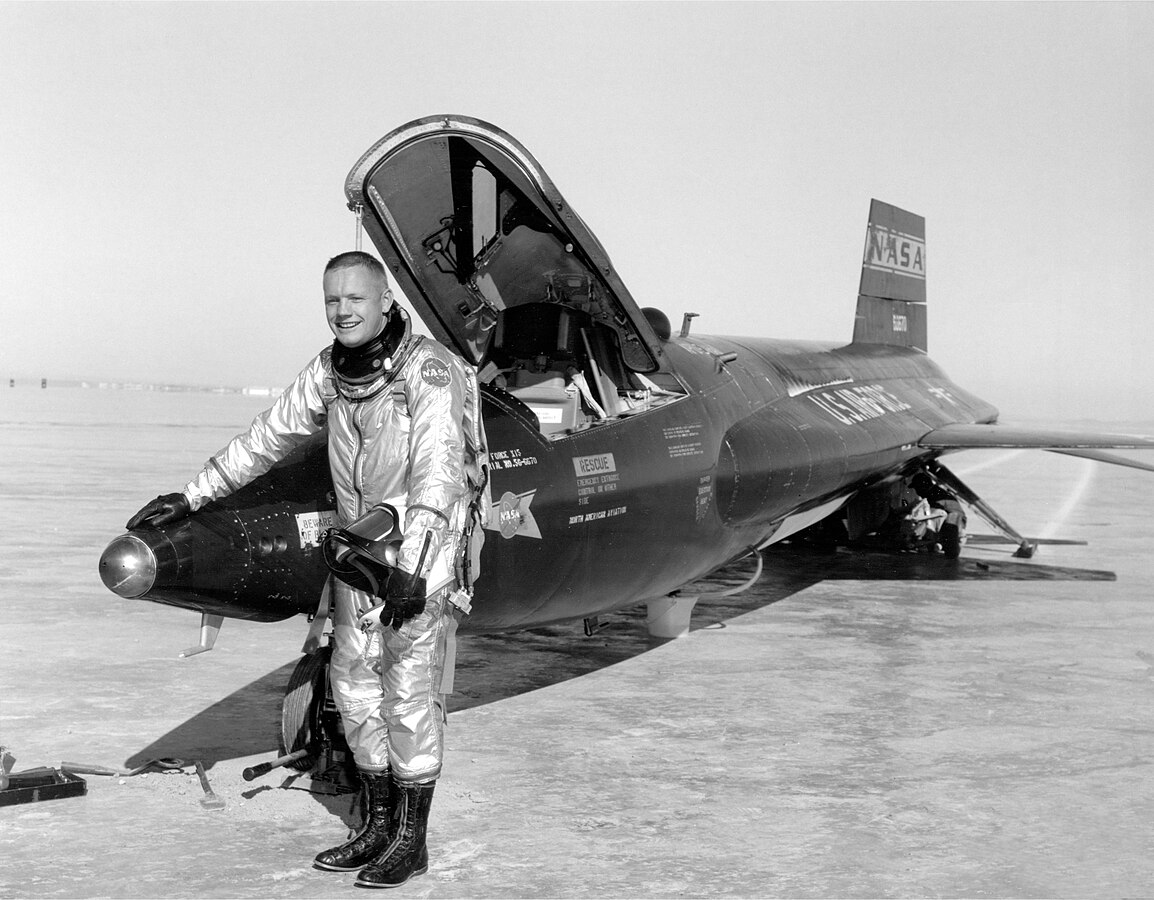
Photo: NASA | Wikimedia Commons
The X-15 was the first aircraft to cross the boundaries of outer space. It was also the first airplane to reach hypersonic speed. Neil A. Armstrong, a NASA pilot and the first person to moon, has been documented at the contracted flight test program.
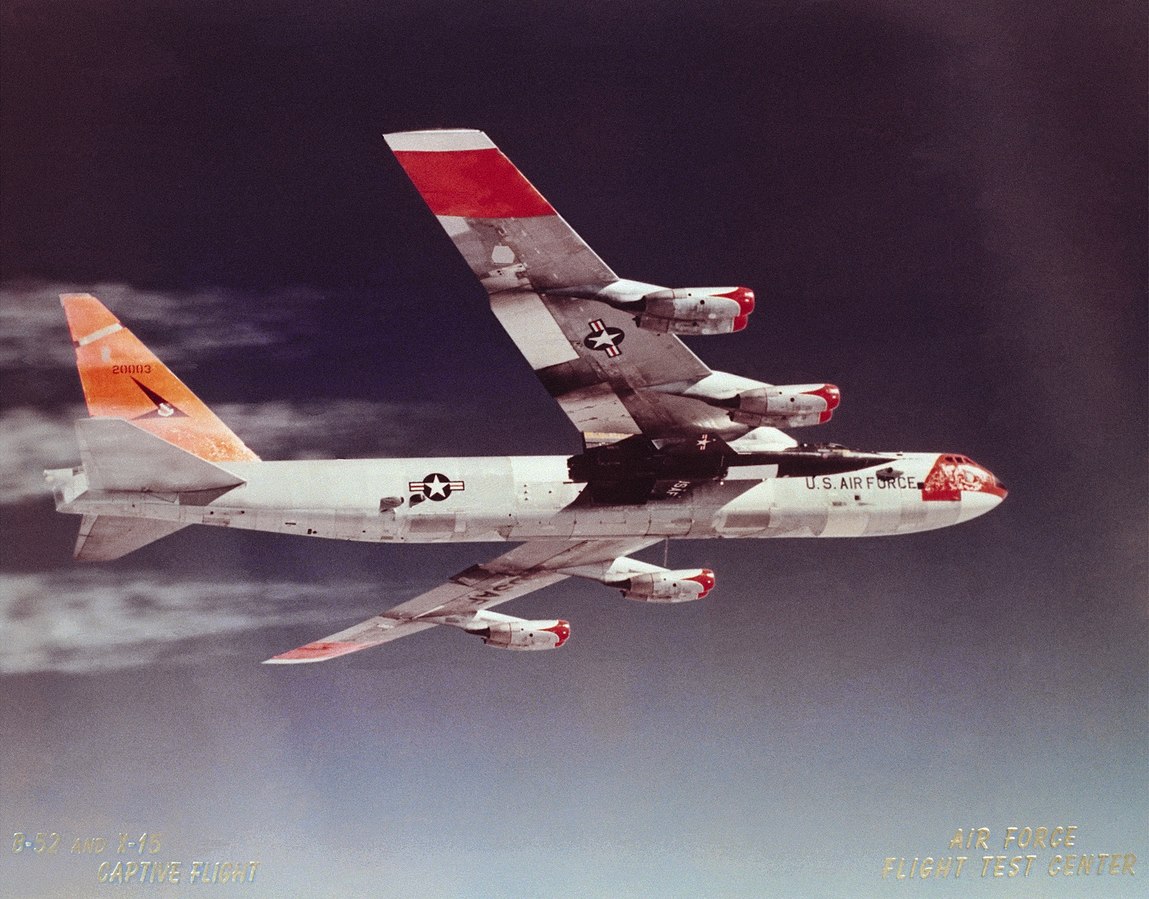
Photo: NASA | Wikimedia Commons
A modified B-52 Strat fortress, a massive bomber, was used as its aerial launchpad and set to a height of 45,000 feet.

Photo: NASA
NASA reported that the six pilots in the pictures above “made 125 of the 199 total flights in the X-15. Rushworth made 34 flights (the most of any X-15 pilot“.
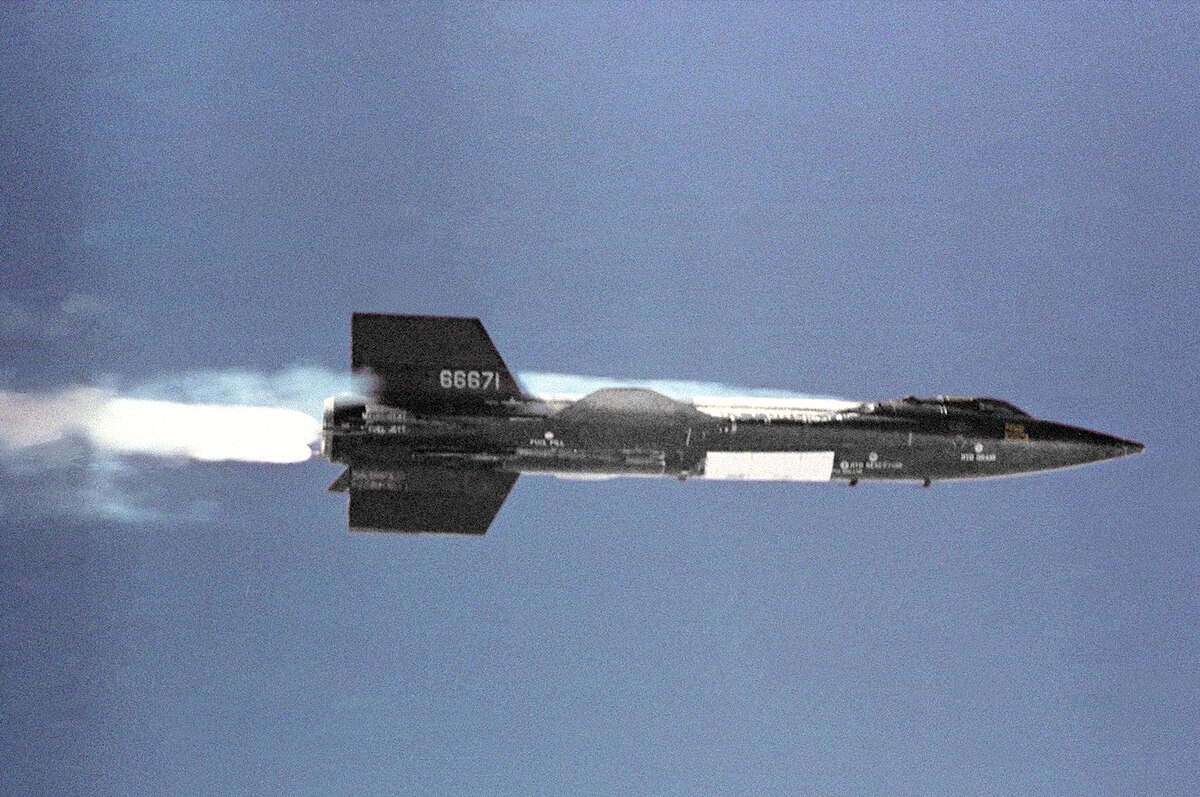
Photo: NASA | Wikimedia Commons
The X-15-2 reached a maximum speed of Mach 6.72 (4,534 mph), making it the fastest aircraft of the X-15 series.
Types of aircraft used in the X-15 program
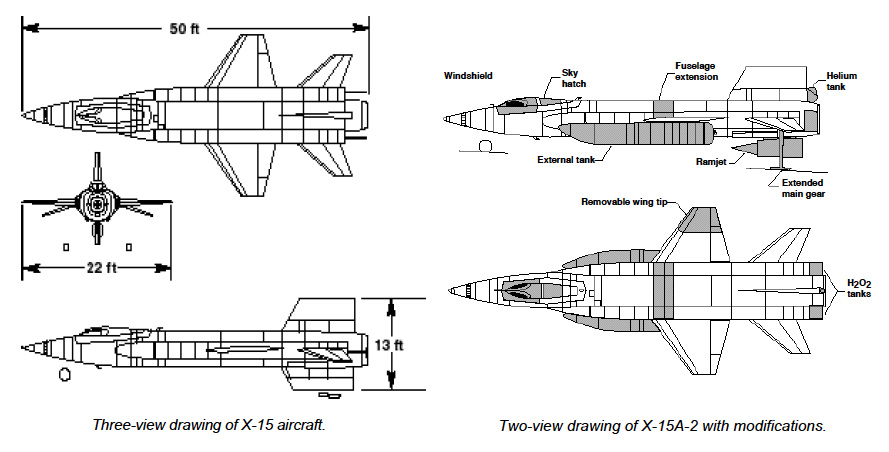
The X-15 program primarily used single type of aircraft: the North American X-15 and the X-15A-2, a modified version of the second X-15 aircraft, was delivered to NASA in February 1964. As reported by NASA the X-15A-2 was modified with external fuel tanks and a 28-inch fuselage extension for liquid hydrogen.
The origins of the X-15
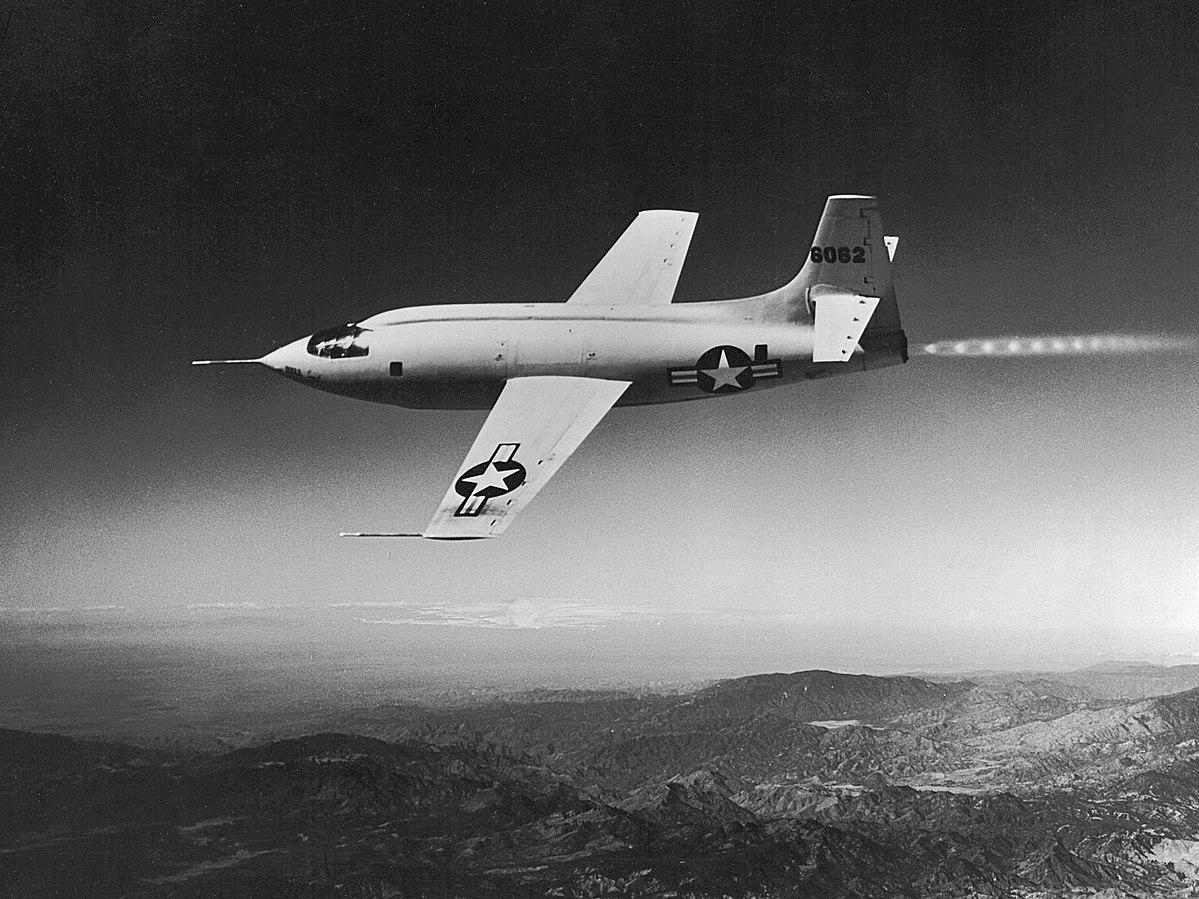
Photo: NASA | Wikimedia Commons
Air Force test pilot, Capt. Chuck Yeager piloted the Bell X-1 (shown in the picture above) over the desert at Muroc Dry Lake in California and flew the first aircraft to break the barrier of the speed of sound. The aircraft investigated aircraft behavior in transonic flight regime (between Mach 0.8 and about 1.3).
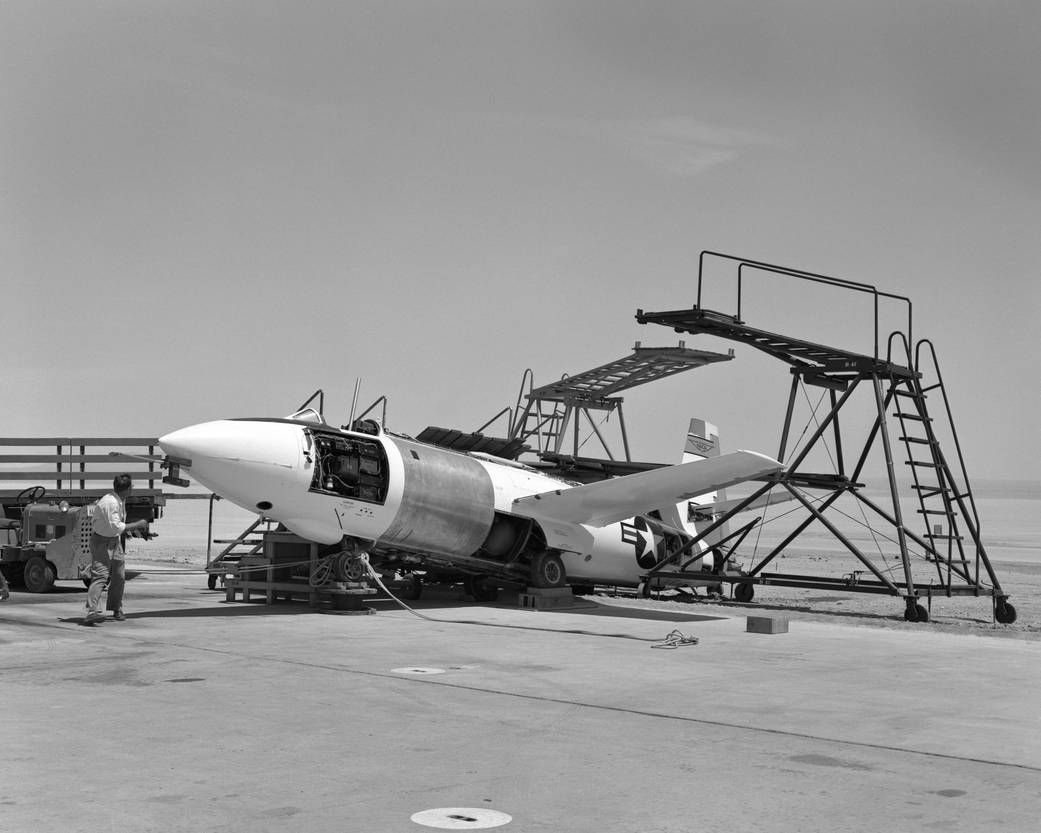

Photo: Pakistan Air Force (PAF) | Wikimedia Commons
The Lockheed F-104 Starfighter was the first aircraft designed for sustained cruise at Mach 2. The aircraft had wings with a leading edge so sharp that it merited a protective glove over it so as not to injure the ground personnel handling it. In comparison to the F-104, the X-15 had wider fuselage and thicker wing with blunt leading edges.

Photo: NASA
Aa WAC Corporal rocket mounted on top of a captured German V-2 boost vehicle launched in 1949 became the first human-made object to reach hypersonic speed.
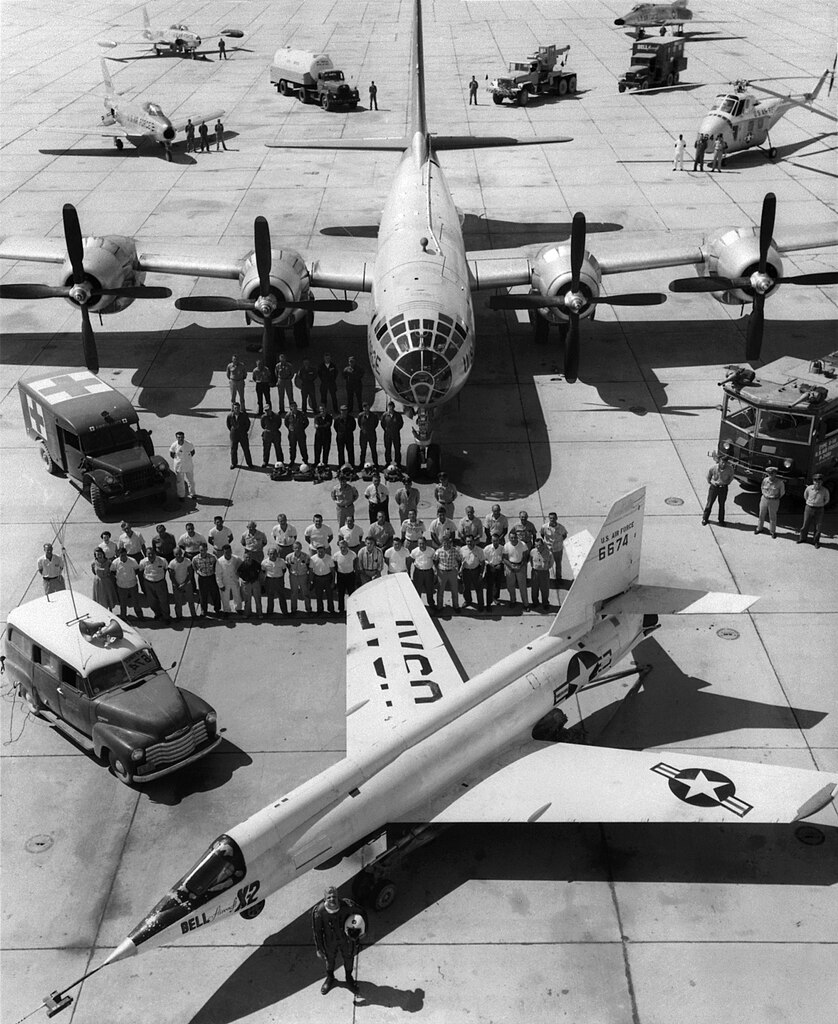
Photo: U.S. Air Force | Wikimedia Commons
Bell X-2 was the second aircraft designed to investigate the aerodynamic effects to a Mach number of 3.2.
“A risk example is the X-15’s first flight. Launched at 33,550 feet and without an engine, which otherwise would allow the pilot to go around again if his approach was not right, the pilot had less than five minutes to learn how to handle the airplane in pitch, roll, and yaw, and to practice a simulated landing at altitude before doing the real thing. On this first flight, a longitudinal instability that caused the airplane to cycle up and down uncontrollably made it dangerously difficult to land.”
– X-15: The World’s Fastest Rocket Plane and the Pilots Who Ushered in the Space Age, by
The five different aircraft used in the X-15 program
The X-15’s first flight was launched at an altitude of 33,550 feet and without an engine.
North American X-15-1
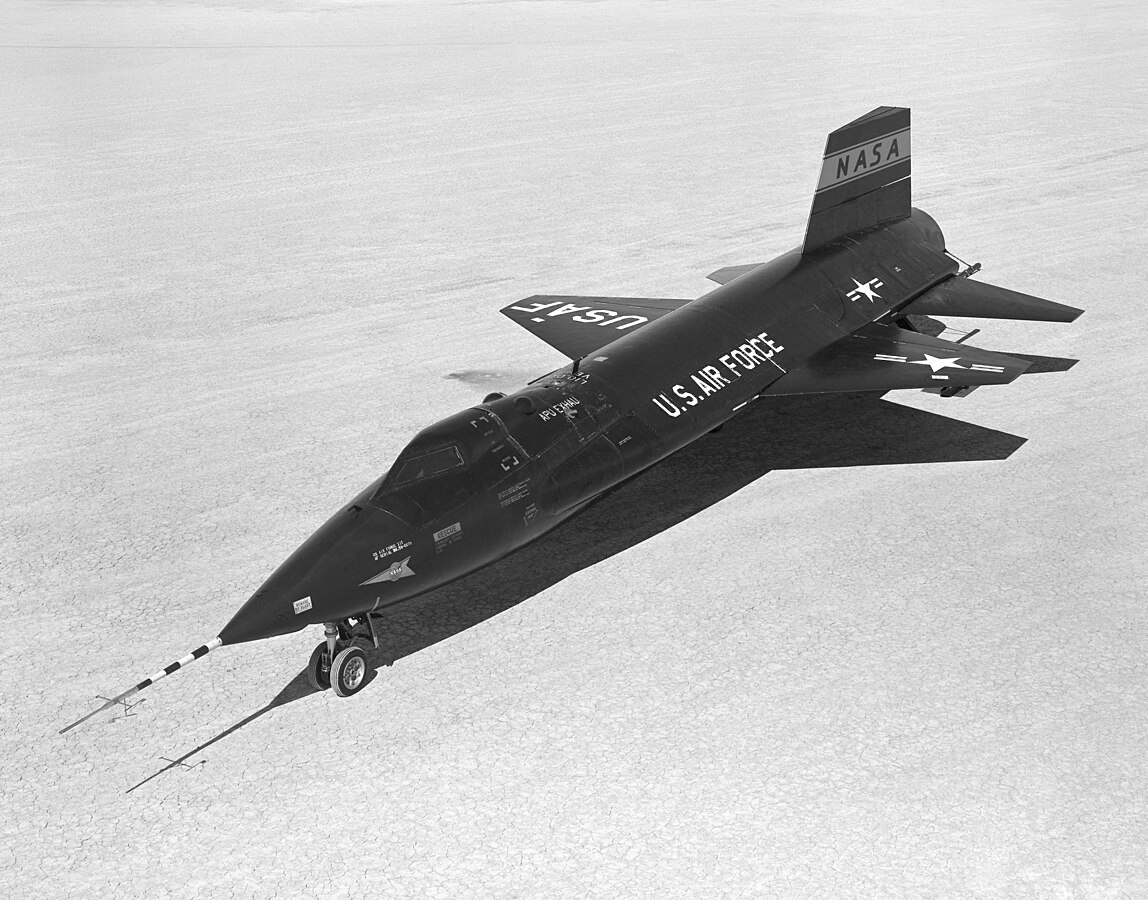
Photo: NASA | Wikimedia Commons
|
Air Force Serial |
56-6670 |
|
Number of Flights |
81 |
|
Highest Speed Recorded |
Mach 6.06 (Pilot Bob Rushworth) |
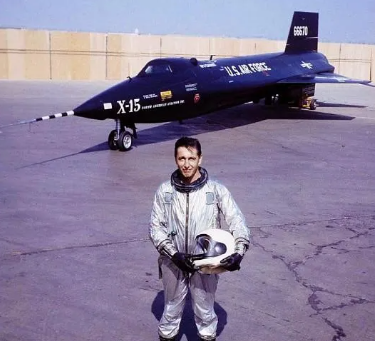
Photo: NASA
The first unpowered glide flight of X-15-1 which took place on June 8 was piloted by NAA pilot A. Scott Crossfield. The flight lasted just five minutes.
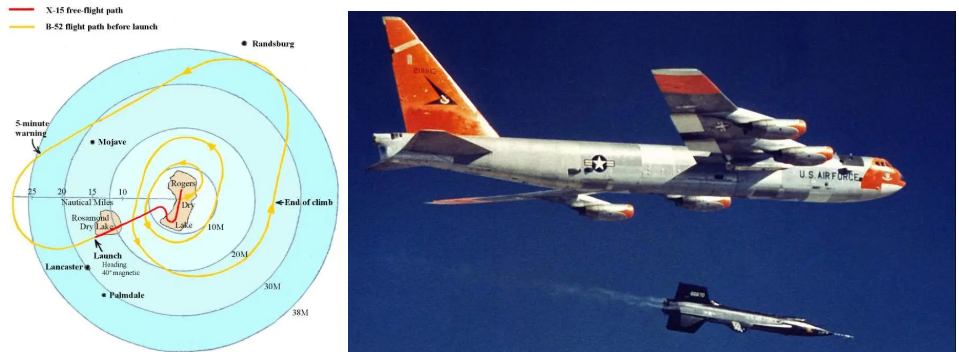
Photo: NASA
The high-speed record for the X-15-1 was set by Robert A. Rushworth on December 5, 1963, as he achieved a speed of Mach 6.06.
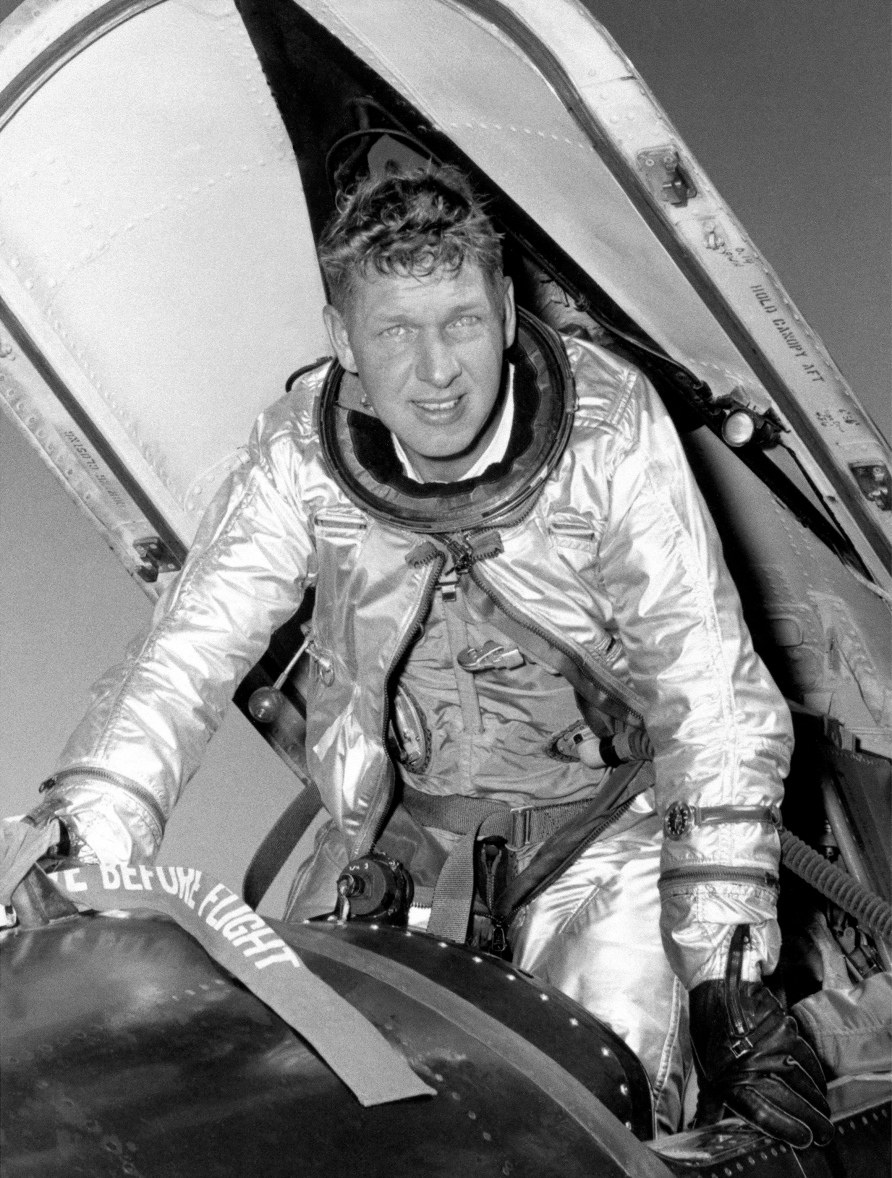
Photo: NASA | Wikimedia Commons
Some other accomplishments of Rushworth in the X-15 program included:
- the first ventral-off flight on October 3, 1961
- the highest dynamic pressure of 2,000 pounds per square foot
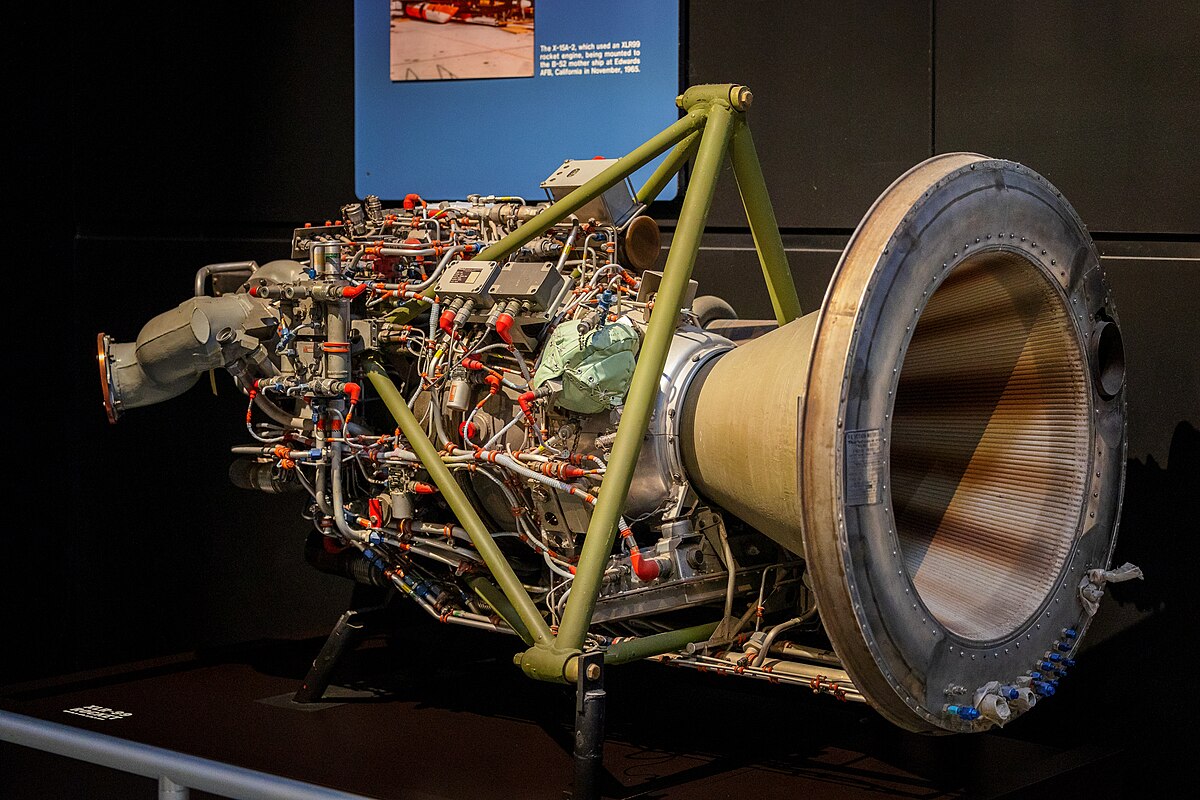
Photo: loganrickert | Wikimedia Commons
Pete Peterson achieved a speed of Mach 4.11 and an altitude of 78,000 feet with the X-15-1 equipped with the higher-thrust XLR99 engines.

Photo: Mys 721tx | Wikimedia Commons
North American X-15-2
|
Air Force Serial |
56-6671 |
|
Number of Flights |
53 |
|
Highest Speed Recorded |
6.72 (4,534 mph) |
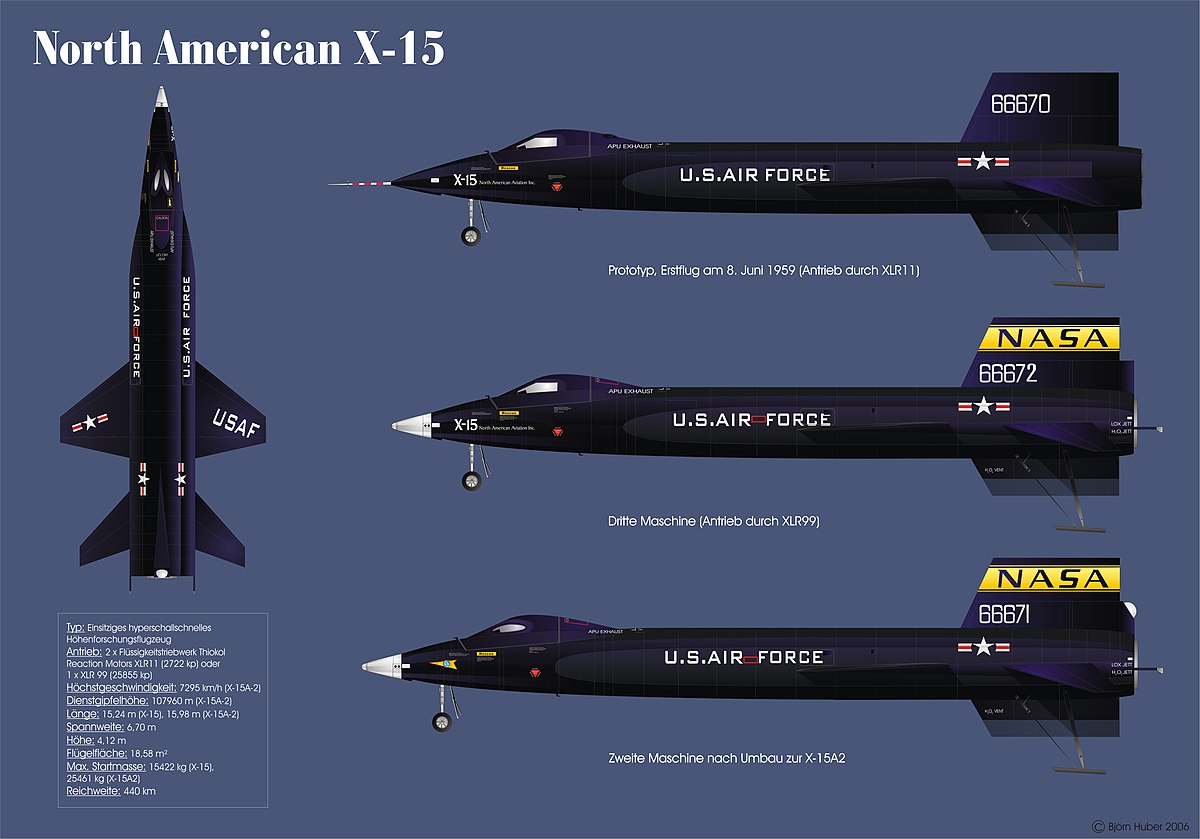
Photo: B. Huber | Wikimedia Commons
The three X-15s that were built were, albeit unofficially, called Ship 1, Ship 2, and Ship 3 – the fastest of which was the Ship #2.
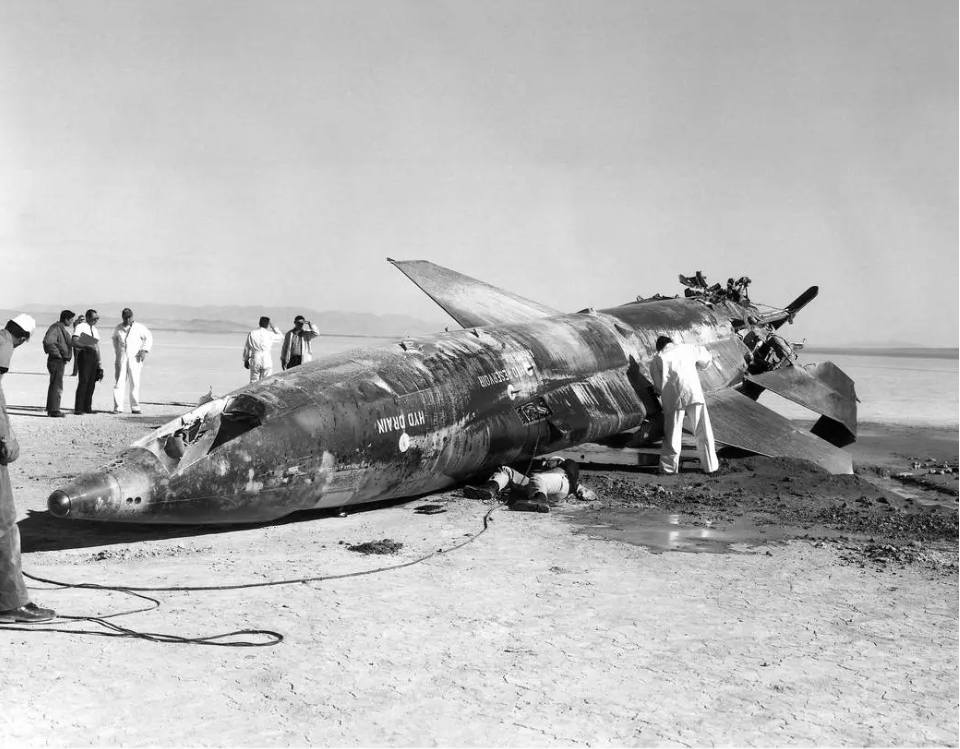
Photo: NASA
Pilot Jack McKay was promptly rescued by an Air Force medical team. After the crash, he recovered to fly the X-15 again, as he took to the skies on the X-15 twenty-two more times. Due to his injuries, he was eventually forced to retire from NASA.
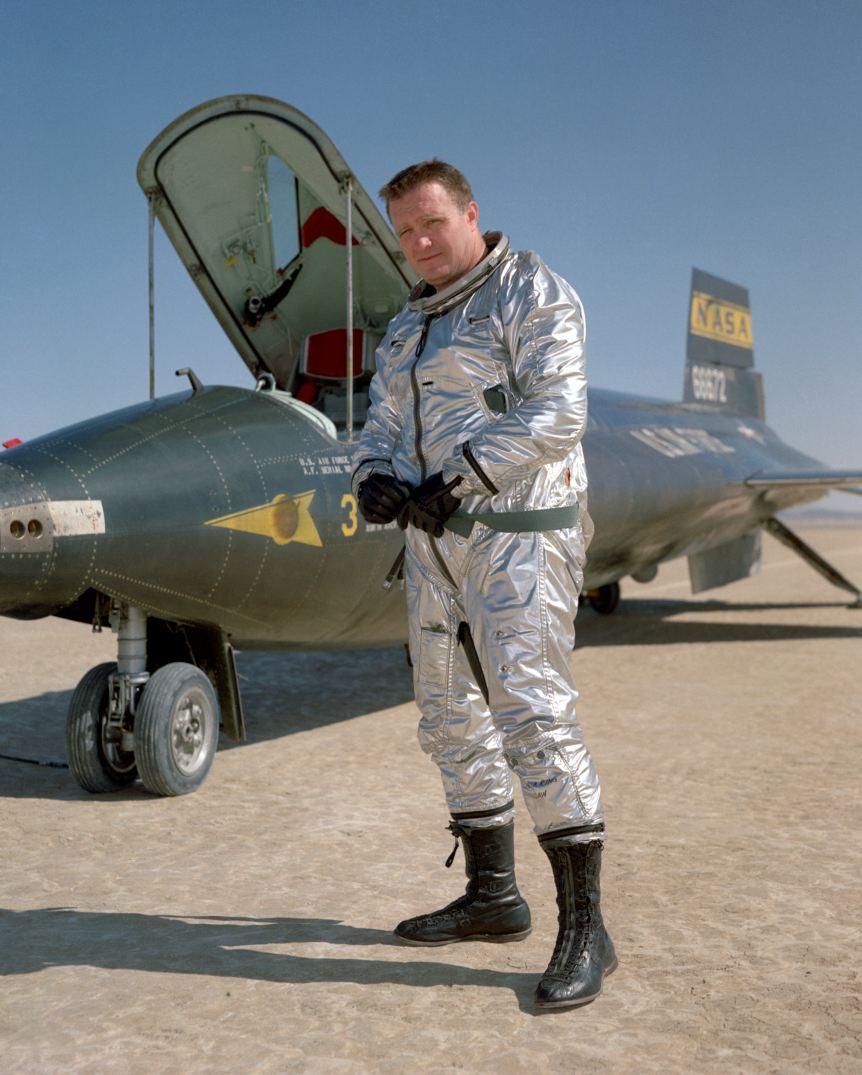
Photo: NASA | Wikimedia Commons
On November 9, 1962, Pilot Jack MkKay:
“following the launch from the B-52 to begin flight 2-31-52, he started the X-15’s rocket engine, only to discover that it produced just 30 percent of its maximum thrust.”
– NASA
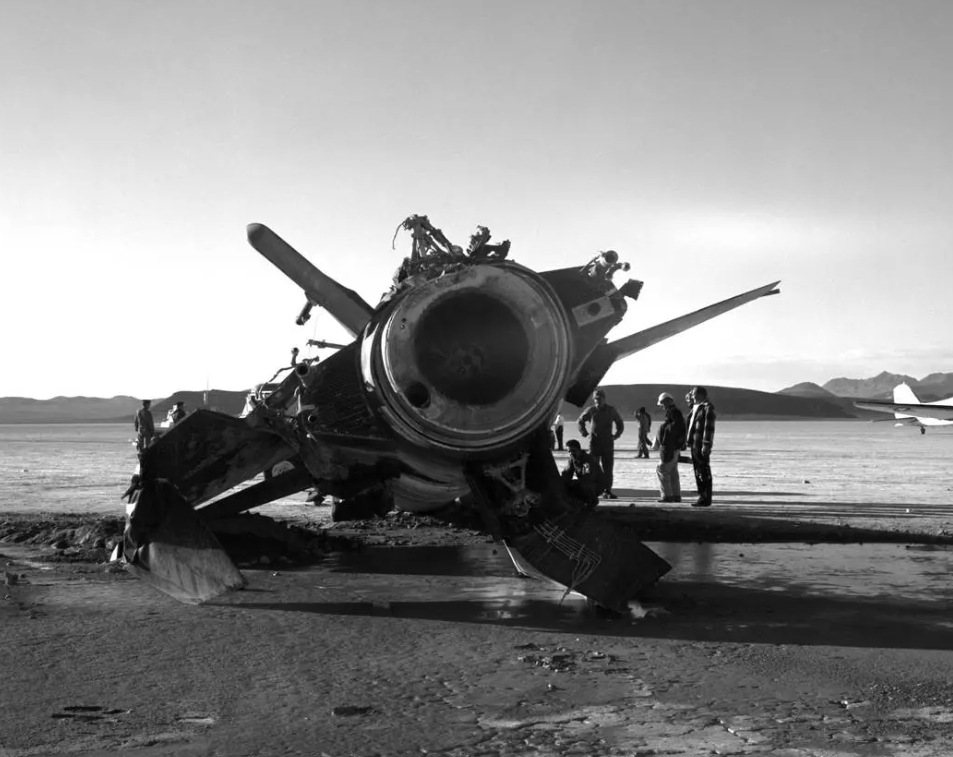
Photo: NASA
Following the crash, the X-15-2 was modified with higher propellant capacity and was tested with a new thermal protection material. It was rechristened to X-15A-2, and reached a speed of Mach 6.72 (4,534 mph) – the fastest for any X-15.
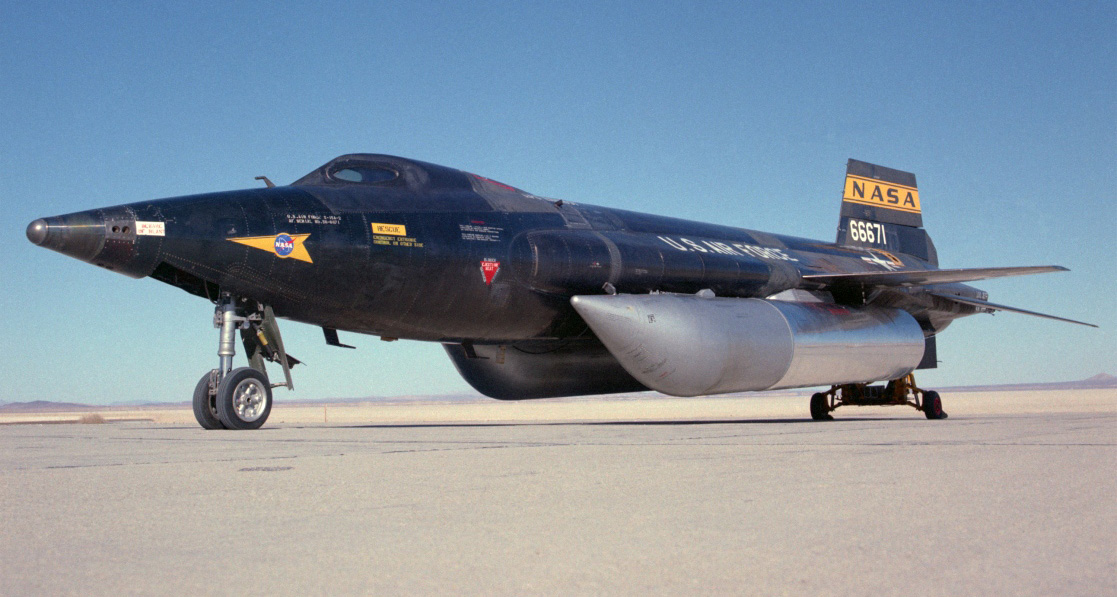
Photo: NASA | Wikimedia Commons
The extra fuel, which could be accommodated in the external fuel tanks, allowed “more full thrust time, totaling 141 seconds—50 seconds more than the basic X-15 Nos. 1 and 2.”
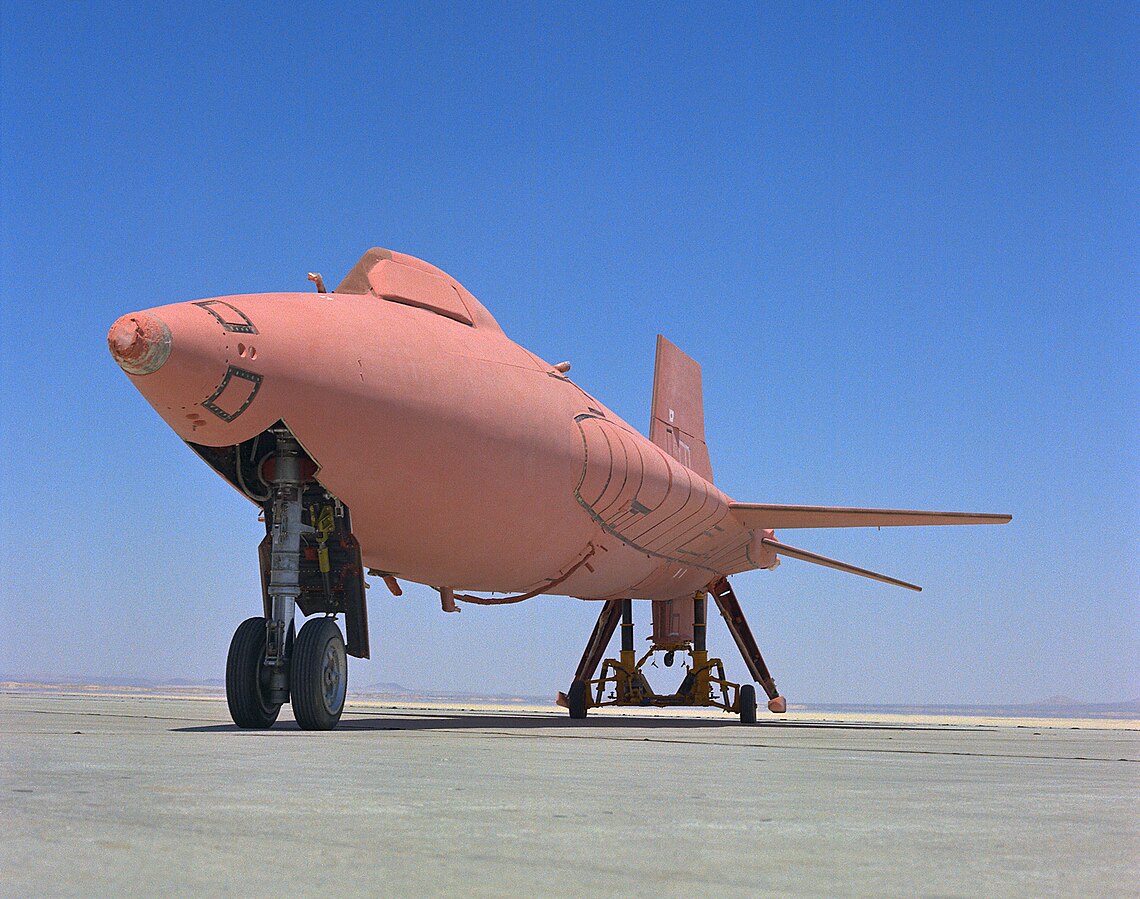
Photo: NASA | Wikimedia Commons
This pink eraser-like substance that the ship #2 was then covered with a white sealant coat which was one of the contributing factors to the flight achieving a record speed of 4,520 mph (Mach 6.7).
X-15-3
|
Air Force Serial |
56-6672 |
|
Number of Flights |
65 |
|
Highest Speed Recorded |
6.72 (4,534 mph) |
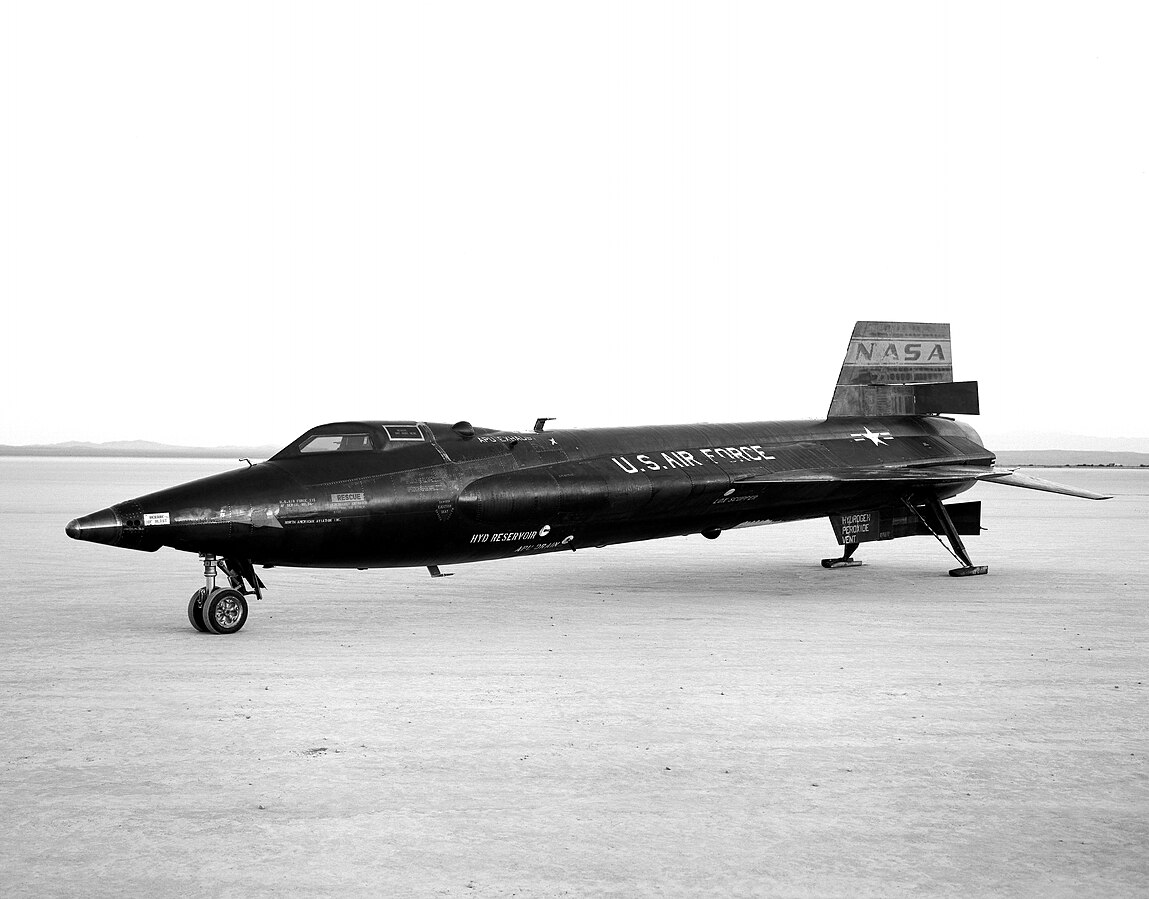
Photo: NASA | Wikimedia Commons
Ship #3 used in the X-15 program had a wingspan of 22 ft, an empty weight of 14,000 lbs, and a maximum altitude of 354,200 feet. The aircraft was the only one in the X-15 program to have met a fatal accident.
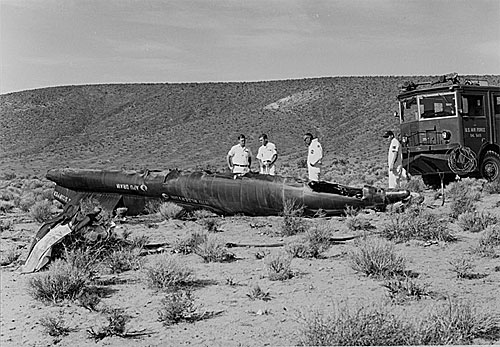
Photo: NASA | Wikimedia Commons
Ship #3 began a slow drift in heading, which soon became a spin. Adams radioed that the X-15 “seems squirrelly,” and then said “I’m in a spin.” Through some combination of pilot technique and basic aerodynamic stability, Adams recovered from the spin, and entered an inverted Mach 4.7 dive.
– NASA
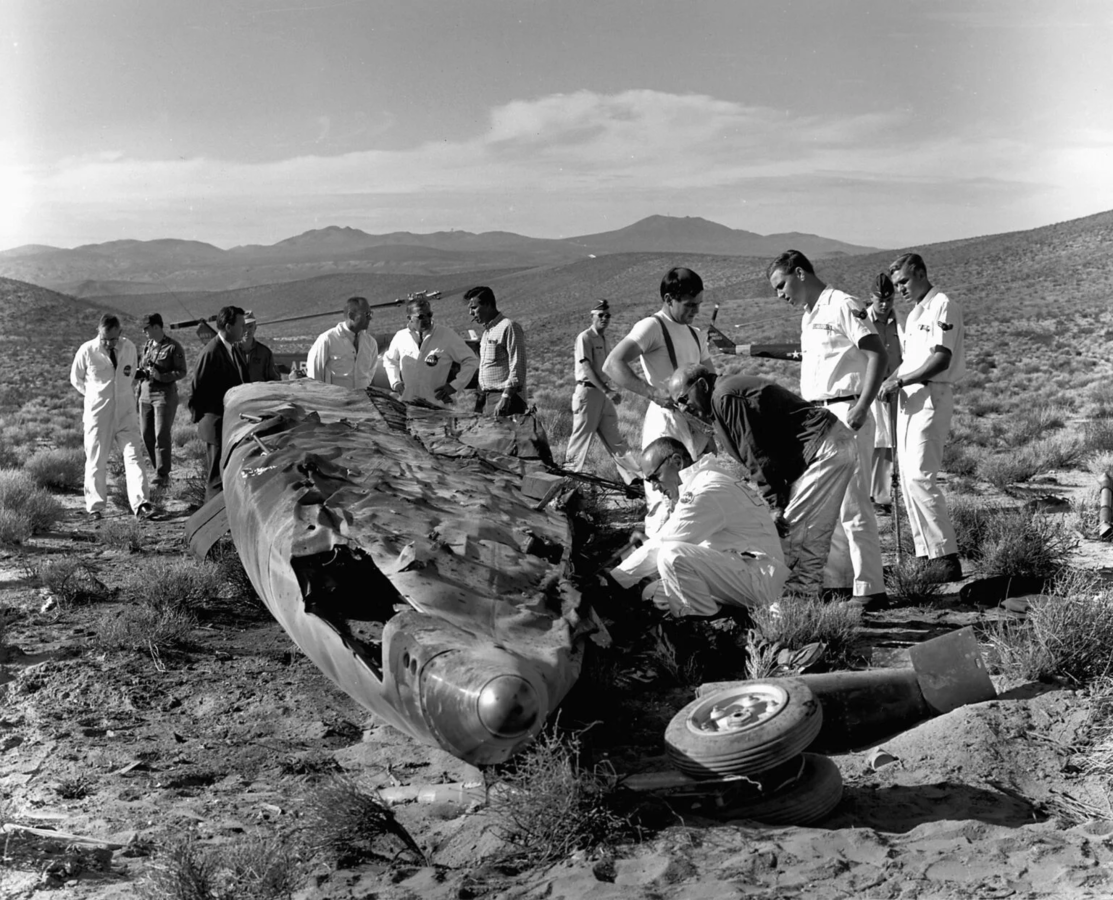
Photo: NASA | Wikimedia Commons
As the X-15 plummeted into the increasingly thicker atmosphere, the Honeywell adaptive flight control system caused the vehicle to begin oscillating. As the pitching motion increased, aerodynamic forces finally broke the aircraft into several major pieces. Adams was killed when the forward fuselage impacted the desert. This was the only fatal accident during the entire X-15 program.
– NASA

Photo: NASA | Wikimedia Commons
The aircraft used to launch the X-15
Two aircraft were used to launch the X-15. These aircraft were known as “mother ship” and helped save fuel as the X-15 would be only applying thrust at an altitude where the air density was low.
NB-52A
Before the hypersonic aircraft was ready to take to the skies on its own, it had to be mounted on a pylon under the B-52’s right wing. The X-15 was released at an altitude of 37,550 feet. This retired aircraft is on display at the Pima Air and Space Museum.
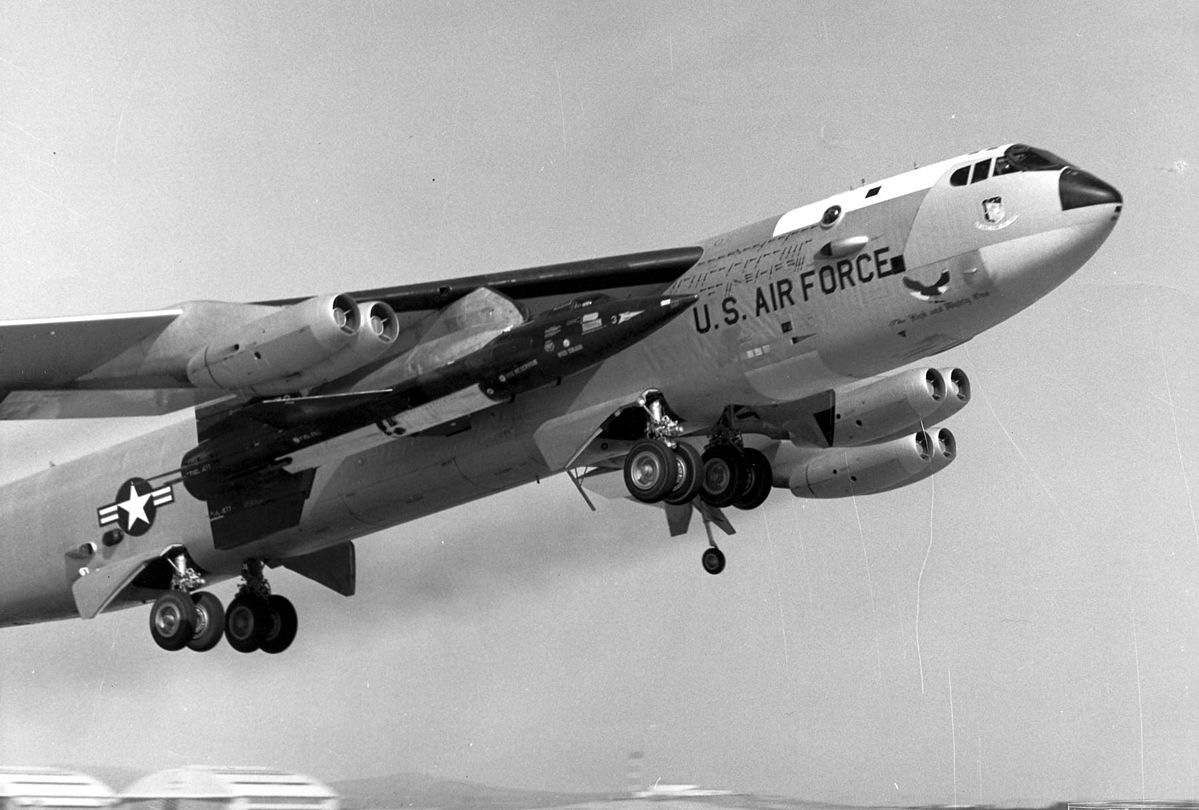
Photo: USAF | Wikimedia Commons
|
Air Force Serial |
52-003 |
|
Nickname |
The High and Mighty One |
|
Retired |
October 1969 |
NB-52B
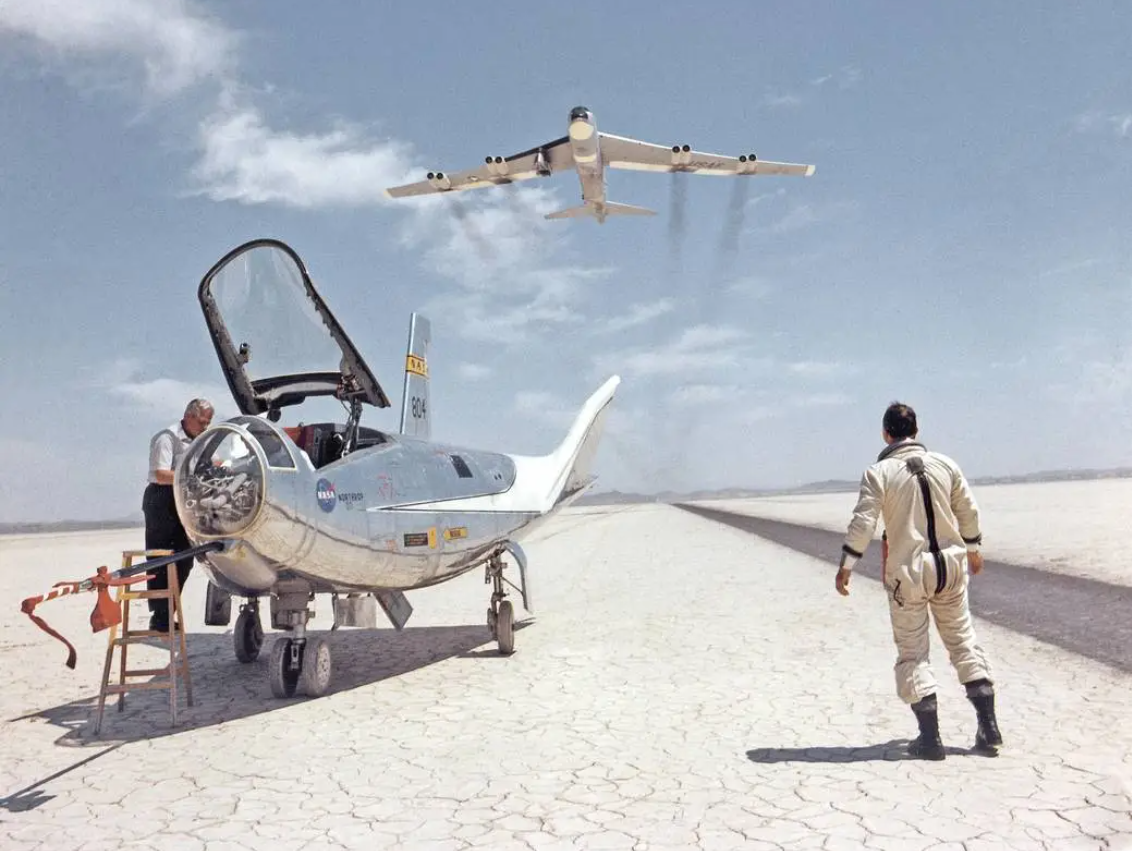
Photo: NASA
|
Air Force Serial |
52-008 |
|
Nickname |
The Challenger |
|
Retired |
November 2004 |
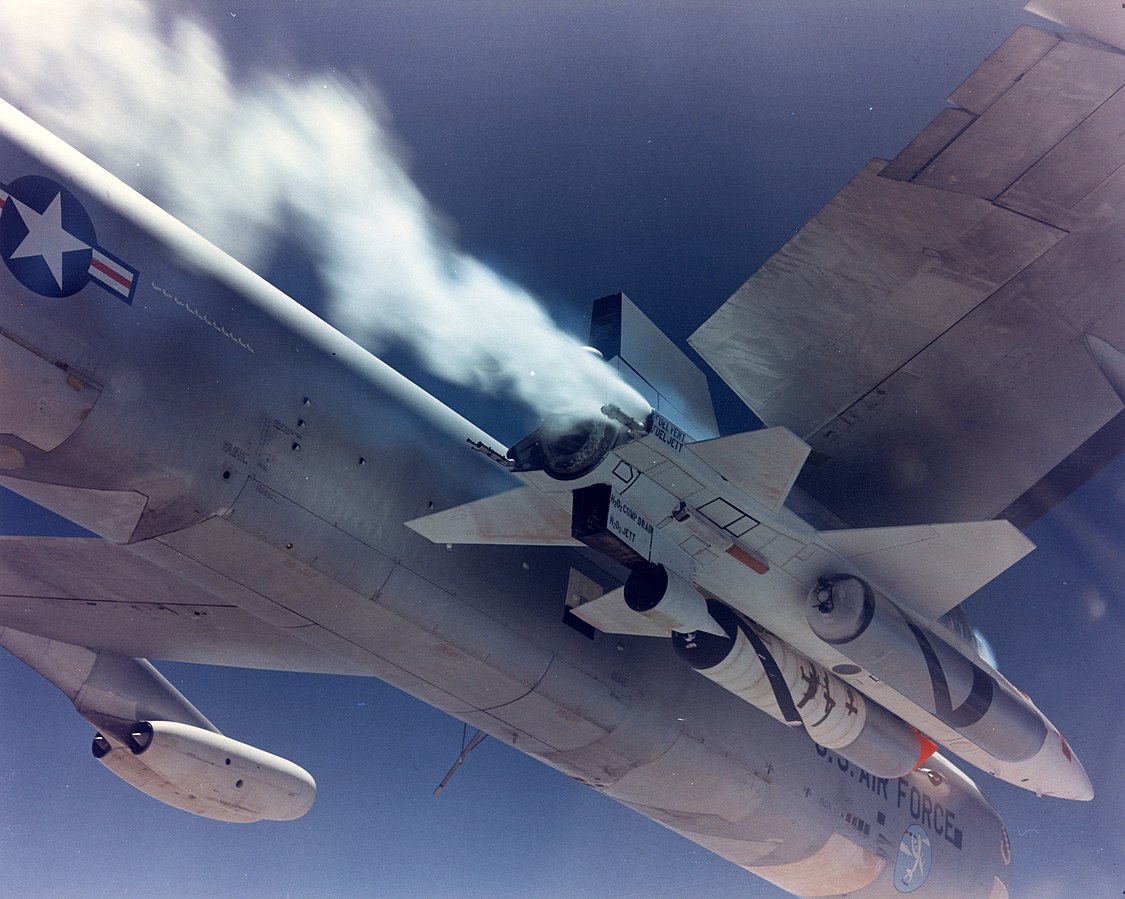
Photo: U.S. Air Force | Wikimedia Commons
The NB–52B with Tail Number (TN) 008 was the launch aircraft on 140 of the 199 X-15 flights. TN-008 flew an aggregate of 159 captive-carry and launch missions in that program.
